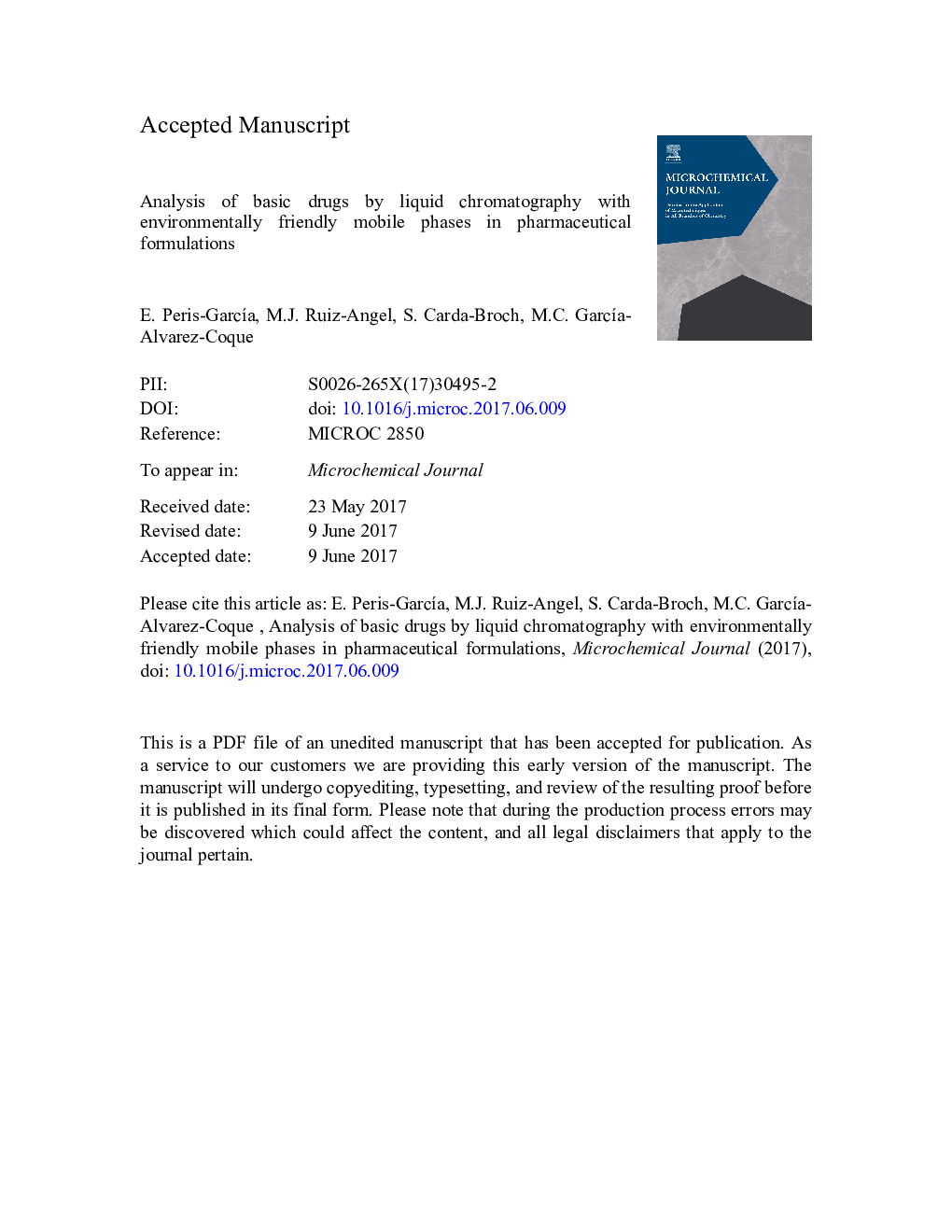| Article ID | Journal | Published Year | Pages | File Type |
|---|---|---|---|---|
| 5139117 | Microchemical Journal | 2017 | 31 Pages |
Abstract
Basic drugs are positively charged in the usual working pH (2-8) in reversed-phase liquid chromatography. This gives rise to a strong association with the residual ionized silanols in conventional silica-based stationary phases, which is translated in poor peak shape and high consumption of organic solvent to get appropriate retention times. Micellar mobile phases containing surfactants give rise to modified stationary phases, where silanols are masked, improving the peak shape. However, mobile phases containing the anionic surfactant sodium dodecyl sulfate (SDS) require a small amount of organic solvent to conveniently decrease the retention of cationic analytes. An alternative is the use of mixed micellar mobile phases prepared with SDS and the more polar non-ionic surfactant Brij-35, which modulates the retention of basic drugs to practical analysis times, eliminating the need of organic solvent. Two simple chromatographic procedures for the control of the β-adrenoceptor antagonists atenolol, celiprolol, metoprolol, oxprenolol and propranolol in pharmaceutical formulations were developed and compared, using 0.15 M SDS/15% 1-propanol and 0.15 M SDS/0.05 M Brij-35 at pH 3 with UV detection. Both methods were validated according to the ICH guideline. Satisfactory recoveries were achieved, with intra- and inter-day relative standard deviations usually below 2% for both micellar modes. Sample preparation was simple and only required solubilization and filtration previously to injection.
Keywords
Related Topics
Physical Sciences and Engineering
Chemistry
Analytical Chemistry
Authors
E. Peris-GarcÃa, M.J. Ruiz-Angel, S. Carda-Broch, M.C. GarcÃa-Alvarez-Coque,
